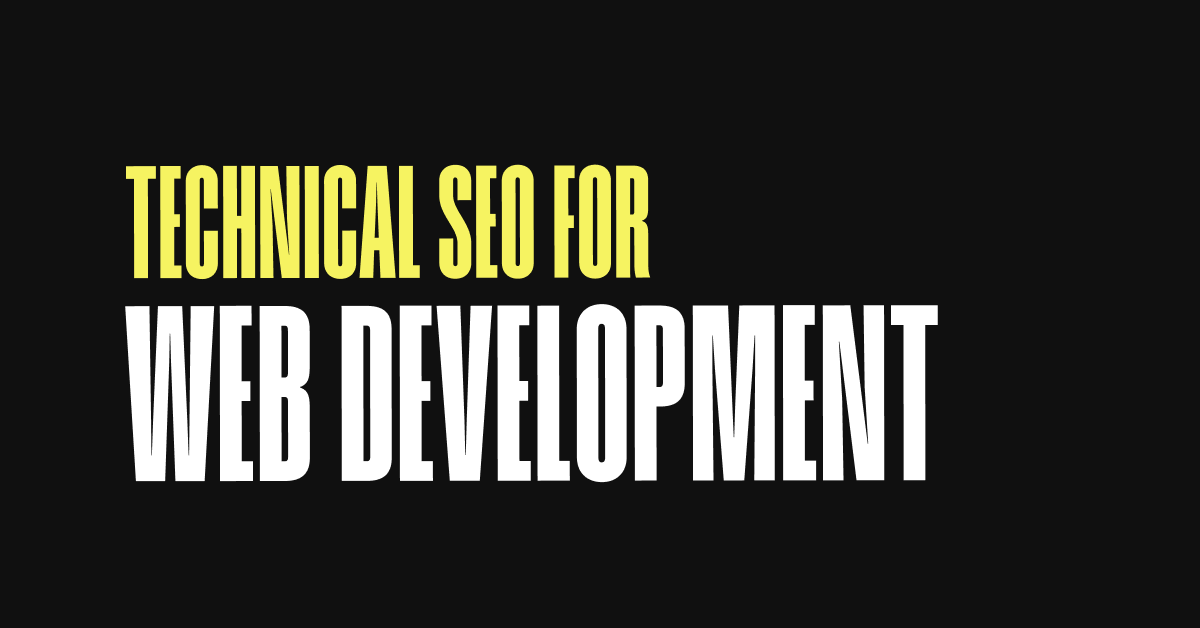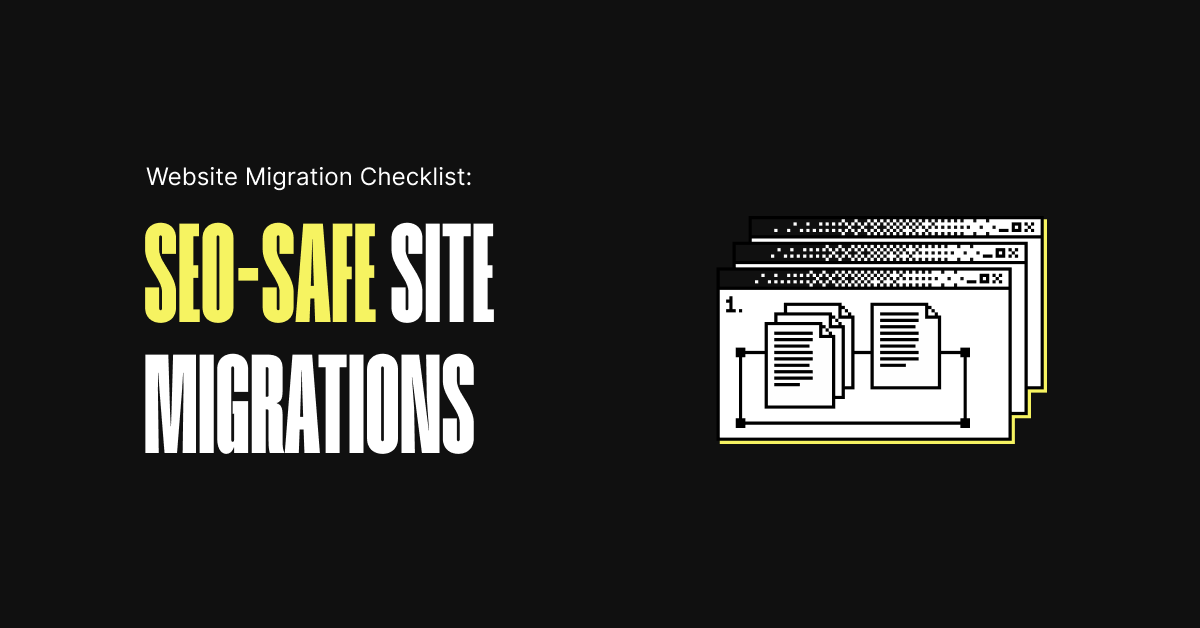Technical SEO for Web Development

If you build it, Google has to find it, render it, and understand it. This guide gives you developer-first, no-fluff practices to ship fast e-commerce experiences that get crawled, indexed, and win clicks. You will learn how to align code, architecture, and infrastructure with search engine behavior – without slowing your roadmap.
Make Google crawl, render, and index what users actually see
Google discovers URLs primarily through links and then renders pages to understand content. Give it clean crawl paths and render-friendly markup. Use HTML anchor elements with href for all navigational and in-content links. Avoid JavaScript-only click handlers for critical links. Ensure primary content exists in the DOM on initial load or is server-rendered so Googlebot can render it reliably. Use semantic HTML for headings, lists, tables, and images so meaning is clear when scripts or styles fail. Validate coverage and rendering with URL Inspection and fetch-and-render tools in your pipeline before shipping. Backend development for crawlability and SSR covers routing, server rendering, canonical control, and indexability patterns for robust discovery.
Control what gets crawled and indexed
Use the right control for the job and avoid blocking essential assets like JS and CSS that Google needs to render pages. A quick comparison:
| Need | Preferred control | Notes |
|---|---|---|
| Prevent indexing but allow crawling | meta robots noindex or X-Robots-Tag | Use for thin pages you still want discoverable via links |
| Prevent crawling | robots.txt Disallow | Do not use for sensitive pages – they can still be indexed if linked |
| Protect private content | Authentication | Best for login-only or staging environments |
Sitemaps that scale
Generate XML sitemaps for canonical, indexable URLs only. Keep files under 50k URLs or 50 MB and use an index sitemap for large catalogs. Update modification dates when content materially changes. Include image and video sitemaps for rich media. Host sitemaps on the same host as the URLs and list them in robots.txt.
Internationalization and multiple versions
If you ship localized or multiregional sites, pair each language-region URL with hreflang and a self-referential canonical. Keep consistent URL patterns per locale, avoid automatic geo-redirects, and provide a crawlable language selector. Localize currency, units, and structured data. For responsive sites, a single mobile-first URL is preferred over separate m-dot versions. For mobile-first indexing, apply the principles in Responsive design for mobile SEO.
Faceted navigation, pagination, and crawl budget
Filters and sorting can explode URL combinations. Let only SEO-valuable dimensions be indexable and canonical. For non-valuable facets, add noindex and block crawl paths if necessary while preserving a discoverable path to valuable listings. Use a stable canonical on paginated sets and provide a logical internal linking path to deep products. Limit URL parameters to known, documented keys. Generate fresh links to new inventory in hubs like category pages and sitemaps so Google prioritizes them.
Structured data that earns rich results
Structured data clarifies meaning and enables rich results. For e-commerce, prioritize Product, Offer, Review snippets where policies allow, plus BreadcrumbList and Organization sitewide. Mark up prices, availability, and variant attributes consistently with the visible content. Add FAQPage only when the Q&A is visible to users. Validate syntax and eligibility with testing tools and monitor rich result reports for errors or drop-offs after deployments.
Page experience and Core Web Vitals for developers
Search prefers fast, stable pages. Treat Core Web Vitals as non-negotiable acceptance criteria in your sprints and CI. For performance tuning that lifts rankings and UX, see Site speed optimization for SEO.
- LCP – target 2.5 s or faster at the 75th percentile
- Serve hero images and critical CSS early with HTTP/2, preconnect, preload
- Use server rendering, optimized TTFB, and CDNs close to users
- Compress and properly size images – AVIF/WebP, responsive srcset
- INP – target 200 ms or faster
- Reduce main-thread work – code split, defer non-critical scripts
- Use interaction-ready hydration and prioritize input handlers
- Eliminate long tasks – yield to the main thread with scheduler APIs
- CLS – target 0.1 or lower
- Reserve space for images, ads, and embeds with width and height
- Avoid late-loading web fonts swaps – use font-display and preloads
- Do not inject DOM above existing content after user interaction
Measure in the lab and field. Use synthetic tests in CI for regressions and monitor field data via RUM to capture real user conditions. Fixes that improve vitals often lift conversion rate and organic visibility. For hands-on patterns across hydration, code splitting, and rendering, explore Front-end development for Core Web Vitals.
Redirects and migrations without losing equity
Use 301 redirects for permanent moves and keep them live long term. Map every old URL to the closest new equivalent and preserve parameters where needed. Update internal links, canonicals, hreflang, and sitemaps to the new URLs. Crawl pre and post launch to catch chains, loops, and 404s. For large moves, migrate in stages when possible and monitor coverage, indexing, and rankings.
Monitoring and troubleshooting
Set up Search Console to track indexing, sitemaps, enhancements, and manual actions. Use server logs to see Googlebot behavior at scale and to verify crawl budget allocation. Alert on spikes in 5xx, 404, and response latency. Bake URL inspection and structured data validation into your release checklist to catch SEO regressions before they ship.
FAQs
What is technical SEO?
Technical SEO is the set of engineering practices that help search engines crawl, render, understand, and index your site efficiently. It covers architecture, performance, structured data, and platform hygiene.
What is SEO in web development?
In web development, SEO means building sites so search engines can access and interpret content by design. It touches routing, HTML semantics, rendering strategy, and infrastructure choices that impact speed and reliability.
What is the 80/20 rule for SEO?
The 80/20 principle focuses on the few changes that drive most impact – fast pages, clean crawl paths, canonical control, quality internal links, and rich, well-structured content. Nail these before chasing edge cases.
If you’re building on WordPress, our SEO-friendly WordPress development ensures proper permalinks, schema, and performance from day one.
At Digital Present, we embed technical SEO into e-commerce development from day zero – clean URL design, canonical rules, crawl-safe faceted navigation, XML sitemaps, product and breadcrumb schema, and migration playbooks that protect rankings. If you want a storefront that is both beautiful and discoverable, let’s build it together.



